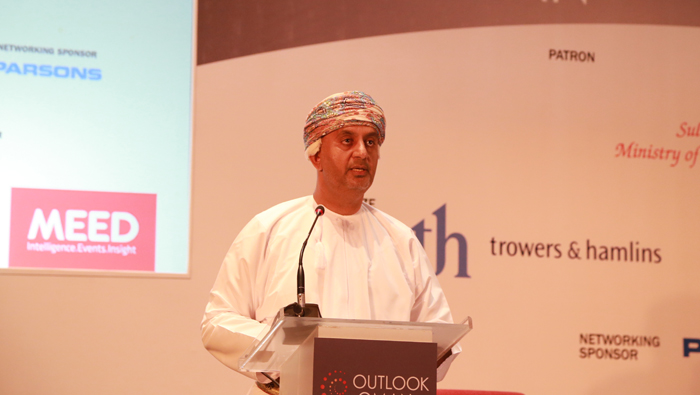
Muscat: Oman’s government is taking major steps in attracting private investment to develop several sectors, especially infrastructure and real estate projects, in public-private-partnership framework.
The government is also planning to transfer current government assets to the private sector, besides offering innovative ways of financing infrastructure projects.
Also, the authorities will establish a separate agency as a one-stop-shop to speed up public-private-partnership (PPP) scheme as the government is lacking funds in view of slack oil revenue, said Dr Ali bin Masoud Al Sunaidy, minister of commerce and industry in his keynote address at the Outlook Oman Forum here on Monday.
The minister reinforced that private sector role is the backbone of Oman's ninth five-year development plan, the last of the series of five-year plans for the Vision 2020, which aims to achieve the goal of economic diversification and the government is focused on establishing the PPP framework to solve the funding challenge and attract much-needed investment.
“Times of tight budgets like these provide an opportunity for PPPs and private sector ownership and finance. Indeed, it is international practice that many of these projects can be designed, built and/or operated by the private sector,” said Dr Al Sunaidy.
There is a need for changes to the laws, the tendering process and the corporate governance legislatives in order to pave the way for a true shift and adequate transfer of assets from the government to the private sector. It is also vital for Oman, like other oil and gas exporting countries, to speed up the implementation programmes of promoting non-oil sector.
OMR1.2b paid to contractors
He said that nearly 50 per cent of OMR9 billion projects outlined in the five-year plan have already been awarded and under implantation with expected completion target this year and the next two years. By the end of September this year, nearly OMR1.2 billion has been paid to contractors by the Ministry of Finance.
Almost 50 per cent of these government projects represent roads, airports and ports sector; 16 per cent representing education, healthcare and training sector; 10 per cent related to housing sector. About 8 per cent of such projects are in the area of electricity, water and water dams.
All of this must go on in line with the government continuing to invest in maintaining oil and gas production capacity. Oil production is stable at nearly one million barrels a day while the country is implementing one of the world’s most ambitious tight gas development projects in collaboration with an international partner. Besides, for the long-term security of supply, Oman is building a large crude oil storage terminal near Duqm.
Further expansions are under way at industrial estates in Sohar, Salalah and Duqm. “This will encompass expansions of established large scale manufacturing as well as a new generation of projects that will create output, employment and opportunities for the private sector,” added Dr. Al Sunaidy.
Tanfeedh recommendations
Commenting on the progress made on the National Programme for Enhancing Economic Diversification (Tanfeedh), Dr. Al Sunaidy said; "Over 250 government officials, private representatives of Majlis Oman, private sector leaders, experts, with many talented young entrepreneurs have been meeting since then almost daily in what is called the Labs. The objective is to expedite the process of diversifying Oman’s GDP away from oil while creating sustainable jobs for Omanis. At this stage, the focus is on manufacturing, tourism, logistics as well as the two enablers, namely, finance and human capital development. The result is so far very encouraging and very promising.”
The Tanfeed Labs have identified a number of projects that are ready to be implemented in manufacturing, tourism and logistics, while offering innovative ways of financing infrastructure projects including PPPs and the transfer of current government assets to the private sector. This work will continue to cover the remaining two main sectors fisheries and minerals, as identified in the 9th Five Year Development Plan.
Waterfront development
The minister noted that one of Oman's keynote projects is Mina Al Sultan Qaboos Waterfront development in Mattrahis expected to be launched for investment next month. Work on this ambitious scheme is expected to begin next year.
Besides manufacturing, logistics and tourism, the fishery sector is expected to grow by more than double from 200,000 tonnes to more than 400,000 tonnes by 2020.
The minerals sector now contributes less than 1 per cent to the gross domestic product with great potential to grow in the coming years based on an easing of regulation, the discovery of sizeable reserves of copper, rare earth and gypsum. Initial feasibility studies already discussed in the Tanfeedh Labs indicated very good return-on-investment for a train section connecting large mineral deposits in the Governorate of Dhofar and Al Wasta to Port Duqum, as well as connecting other deposits from Al Dhahira to the Port of Sohar. Such feasibility studies are now under detailed scrutiny.